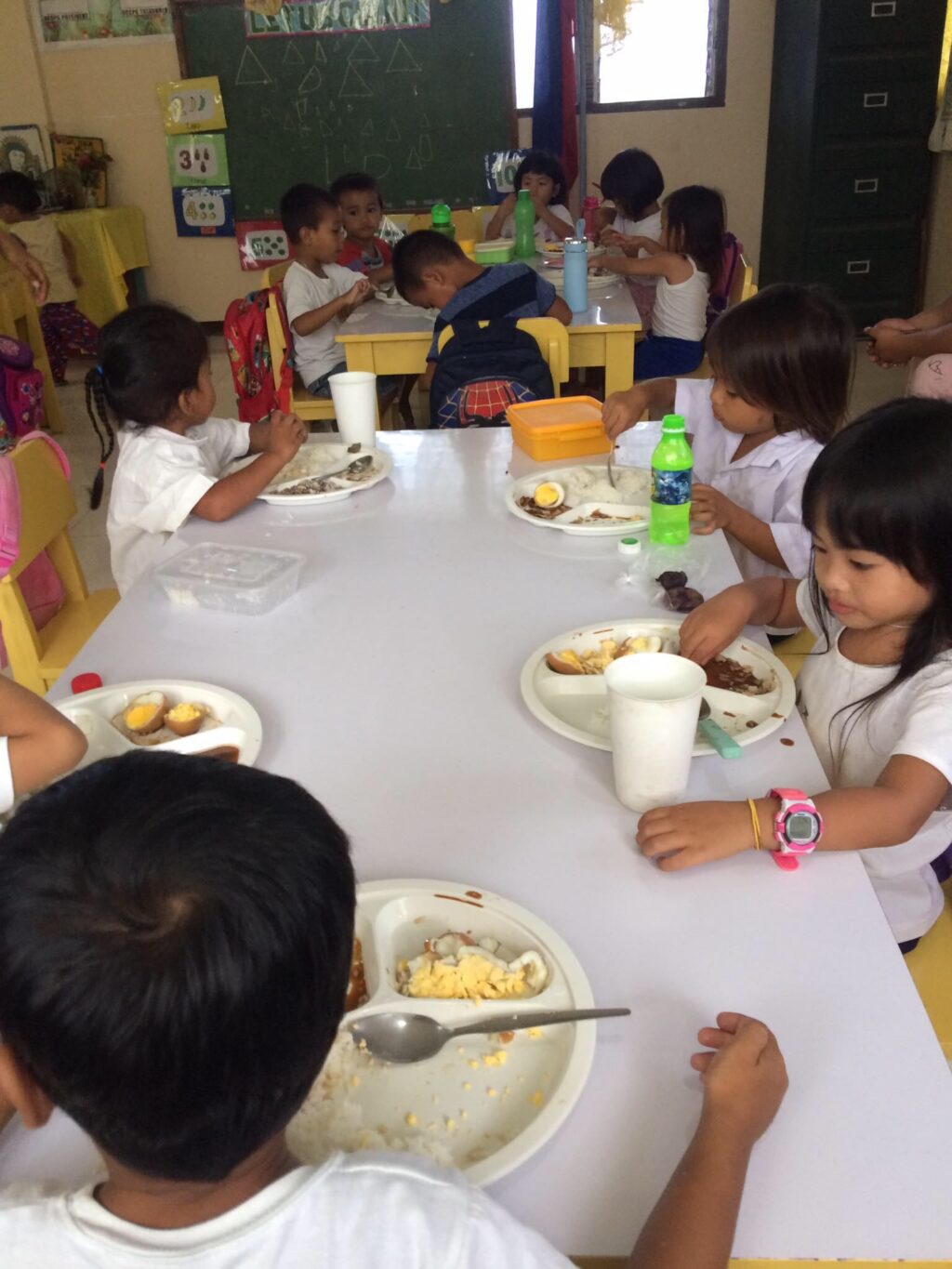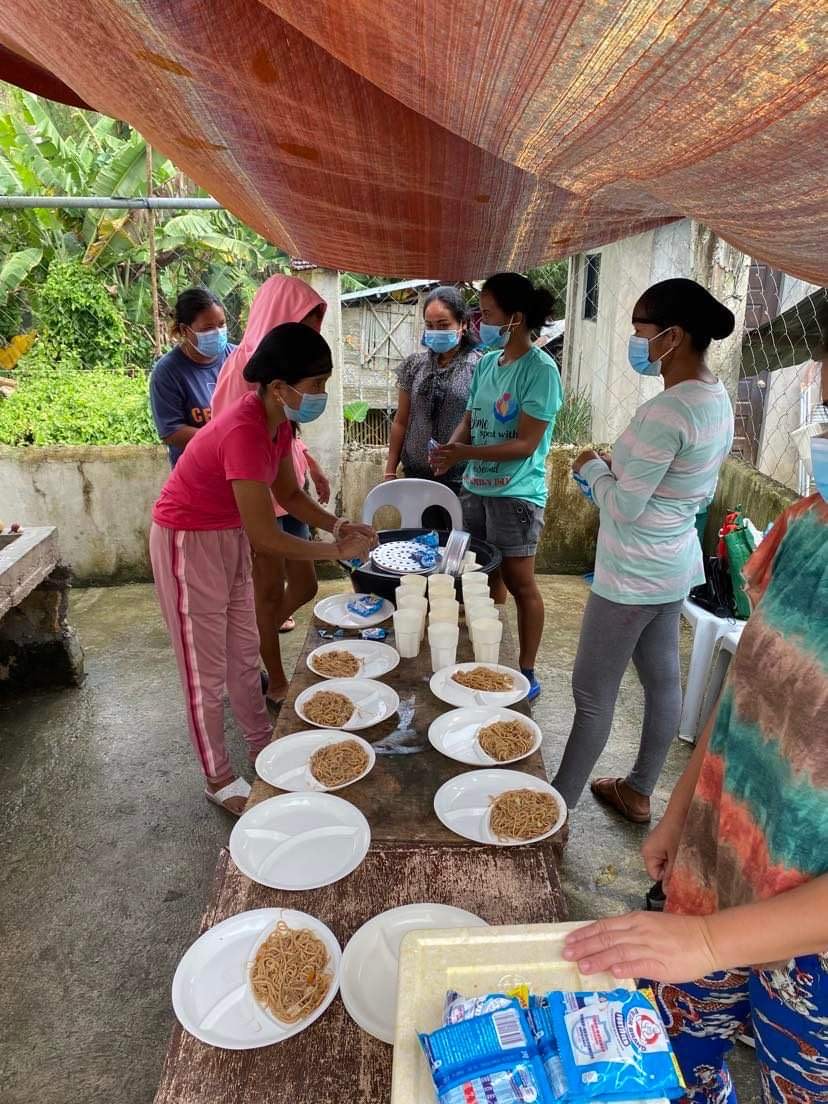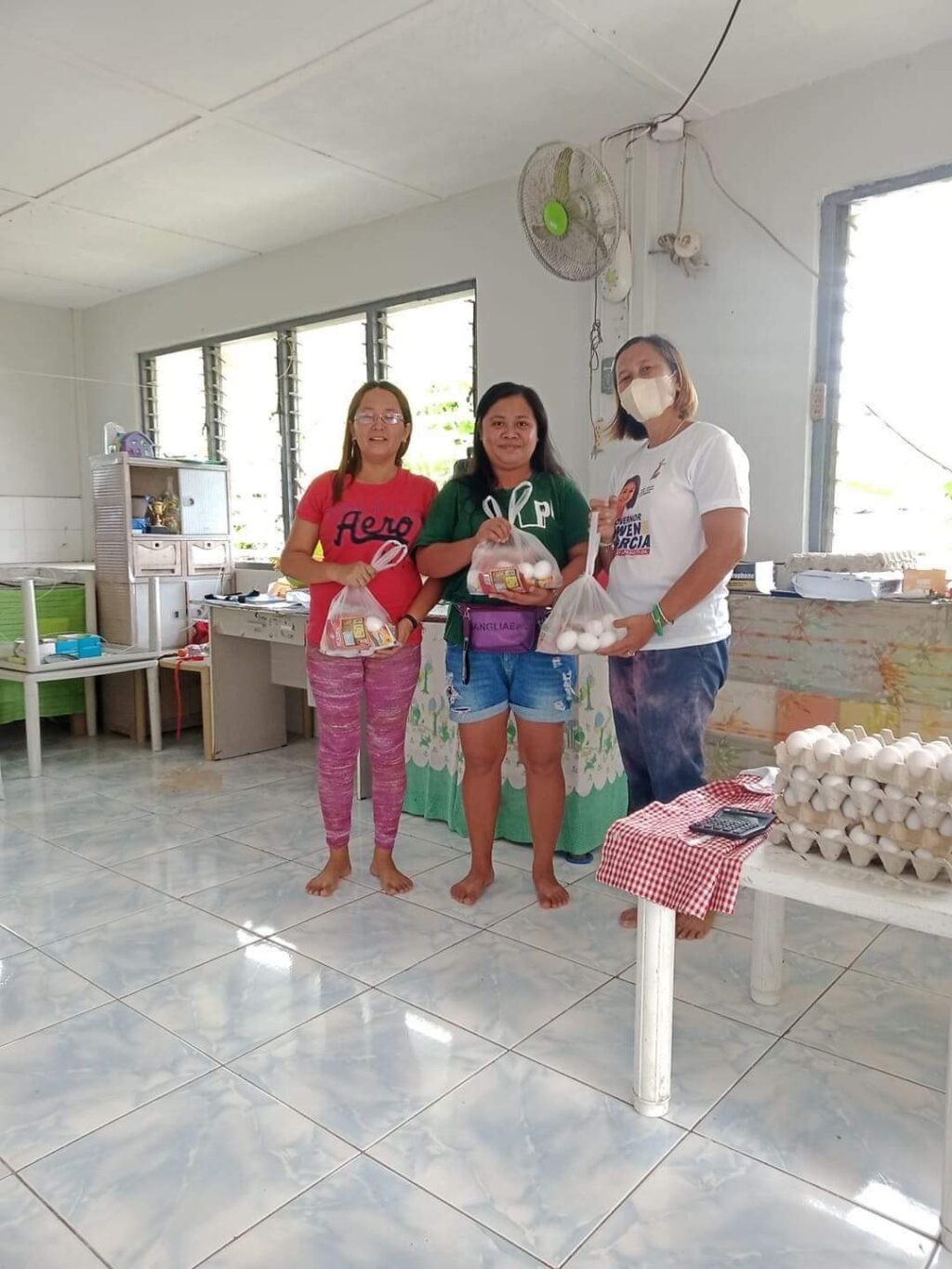Chipping away at malnutrition: Is feeding 79,000 kids for 120 days in Cebu province enough?
DSWD-7 has set aside P199M for drive to malnutrition for Cebu Province this year

Beneficiaries eating egg humba during the supplementary feeding program implementation of the local government unit o Aloguinsan, Cebu, in 2022.| Photo courtesy of DSWD-7
Last of Three Parts
CEBU CITY, Philippines – The Department of Social Welfare and Development in Central Visayas (DSWD-7) has earmarked P199 million to fund its campaign to decrease the prevalence of malnutrition in Cebu Province in 2023.
With the budget, the agency aims to support 79,000 children, whose ages are from two to five years old in Cebu Province, including Mandaue City, by allocating P21 per day per child for 120 days.
READ: NUTRITION MONTH: How is nutrition in Central Visayas?
Supplementary feeding starts Sept. 3
Romielene Padilla, DSWD-7 nutritionist/dietician, said the Supplementary Feeding Program would start on September 3 until December 31, 2023.
DSWD’s Supplementary Feeding program refers to the provision of food in addition to regular meals. The program targets children, whose ages are from 2 to 3 years old and who are under the supervised neighborhood play groups of the local government units (LGU), and children, whose ages range from 3 to 5 years old and who are enrolled in Child Development Centers which are also known as Day Care centers.

Parents preparing bihon guisado with tuna for the SFP beneficiaries in Tumalog Daycare Center, Oslob, Cebu, last year.| contributed photo
READ: Buwad, ginamos, noodles: A struggling family shows why nutrition is least of their worries
HUCs not included
However, with the limited funds, the local governments of highly urbanized cities (HUCs) in Cebu were advised to fund their feeding programs for their child development centers.
Padilla said Cebu City, for instance, was not included in their implementation for last year and this year because the allocated number of beneficiaries would not suffice for the number of children in Cebu City.
“However, for Lapu-Lapu, they are not yet included for the current cycle because just recently lang na sila nahuman sa last year nga implementation. Nagconclude na sila last May,” she told CDN Digital.
(However, for Lapu-Lapu, they are not yet included for the current cycle because they have just recently completed the implementation last year. They already concluded this last May.)
Lapu-Lapu City has 5,900 beneficiaries for the DSWD-7’s Supplementary Feeding Program.
READ: Doing feeding right
Feeding in day care centers
Meanwhile, with the resumption of face-to-face classes in child development centers and face-to-face meet-ups in supervised neighborhood play groups, DSWD-7 plans to implement the program in the respective day care centers from Monday to Friday.
“[On] Saturday and Sunday, we are already considering providing ready-to-eat food so that children can bring it at home and it’s already the parents who are going to be giving the food to the child. Ready to eat naman siya (It is ready to eat). So, it would be less hassle also to the parents’ side since they will not anymore cook the particular food,” Padilla said.

Parents of SFP beneficiaries receiving food items such as egg, pansit misua, cooking oil, powdered tablea, canned tuna and beefloaf and powdered milk during the 3rd delivery of hot meals last August 23, 2022 in LGU Alcantara, Cebu
These ready-to-eat food items are all food products endorsed by the Department of Science and Technology (DOST) Food and Nutrition Research Institute, which means that these products have the target calories intended for these age brackets.
They come in the form of biscuits, rice mongo cereals, and rice bars.
READ: Feeding hungry kids
Milk feeding for kids
Moreover, the DSWD-7 is also providing milk feeding for children coming from LGUs with low nutritional status improvement, including the towns of Ronda, Ginatilan, Malabuyoc, Samboan, Boljoon, Alcantara, Sta. Fe, Daanbantayan, Pilar, and Tudela.
These pasteurized or sterilized milk were sourced from the National Dairy Authority or the Philippine Carabao Center, Padilla said.
READ: Need for separate nutrition body under President’s office questioned
Regional Nutritional Council
The DSWD-7, however, is just one of the agencies that form part of the Regional Nutrition Council (RNC) in the region.
The Department of Health’s role, under the “Masustansyang Pagkain para sa Batang Pilipino Act” or RA 11037 starts with the first 100 days of pregnancy and up to 24 months. From 24 to 25 months, parents are encouraged to enlist their children in neighborhood-supervised play groups or enroll in day care centers to avail of the DSWD feeding program.
READ: National Nutrition Council upgrade sought
From DSWD to DepEd
Upon graduating from day care, the Department of Education (DepEd) will already be the one to monitor these children.
DepEd-7 Director Salustiano Jimenez said, aside from its feeding program, the department had also been keen on spreading awareness of the importance of a healthy diet through month-long celebrations of nutrition month, in coordination with other agencies.
He, however, admitted that with only limited funding, DepEd-7, unlike DSWD-7’s across all children implementation of the feeding program, would only prioritize pupils who were malnourished either underweight, obese, stunted, or wasted.
READ: Undernutrition a public health imperative
Best way to ensure proper nutrition to kids
“Ang ato lang sa DepEd, because of our limited budget, ang kuan lang ato katong mga bata nga mga malnourished. Not across all learners. But with the coordination and partnership with NGOs and LGUs, there are schools nga 100 percent ang mga bata nga all year round,” he said.
(Here at DepEd, because of our limited budget, we will just prioritize those kids who are malnourished. But with the coordination and partnership with NGOs (nongovernmental organizations) and LGUs, there are schools that have 100 percent children all year round.)
Both the agencies, however, emphasized, that the feeding programs would only be supplemental and that complete and nutritious meals at home would be the best way to ensure proper nutrition of children.
READ: The real cost of malnutrition
Disclaimer: The comments uploaded on this site do not necessarily represent or reflect the views of management and owner of Cebudailynews. We reserve the right to exclude comments that we deem to be inconsistent with our editorial standards.
